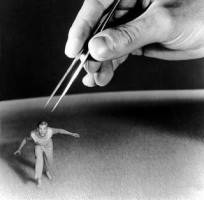September 4, 2013
Facilities managers should harness information to show the value of what they do
 Of the various myths that plague the facilities management profession, the most pernicious may well be that the role of facilities managers is largely to carry out what the early feminists called shit-work – the kind of job that only becomes visible when it is done badly or isn’t done at all. Conversely, when it is done well, nobody seems to notice or even care that much. The proto-feminists of the 50s and 60s applied the term to housework, but the term is equally apposite for the work of many facilities managers who may only come to the attention of their organisation when the air-conditioning stops working, the toilet floods or there is a problem with the car park.
Of the various myths that plague the facilities management profession, the most pernicious may well be that the role of facilities managers is largely to carry out what the early feminists called shit-work – the kind of job that only becomes visible when it is done badly or isn’t done at all. Conversely, when it is done well, nobody seems to notice or even care that much. The proto-feminists of the 50s and 60s applied the term to housework, but the term is equally apposite for the work of many facilities managers who may only come to the attention of their organisation when the air-conditioning stops working, the toilet floods or there is a problem with the car park.























September 5, 2013
Open-plan office workers need time out from the madding crowd
by Sara Bean • Comment, Facilities management, Flexible working, Workplace design
Open-plan offices are now the most popular workplace layout, primarily because they save on space, enable flexible working and, it’s argued, foster better communication and collaboration between employees. Yet open-plan still has some way to go to convince occupants of its merits. According to a recent study published in the Journal of Environmental Psychology, of over 42,000 US office workers in 303 office buildings, workers in private offices remain the most satisfied with their surroundings. However, what constitutes a satisfactory workspace differed, according to the employee’s current office layout. So while noise was the most important consideration for open-plan workers, light and ease of interaction topped the satisfaction list for those housed in cellular offices. (more…)